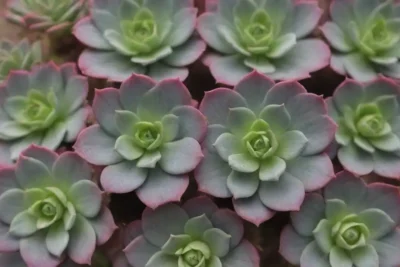
41. Flowering Succulents that Attract Pollinators to Your Garden
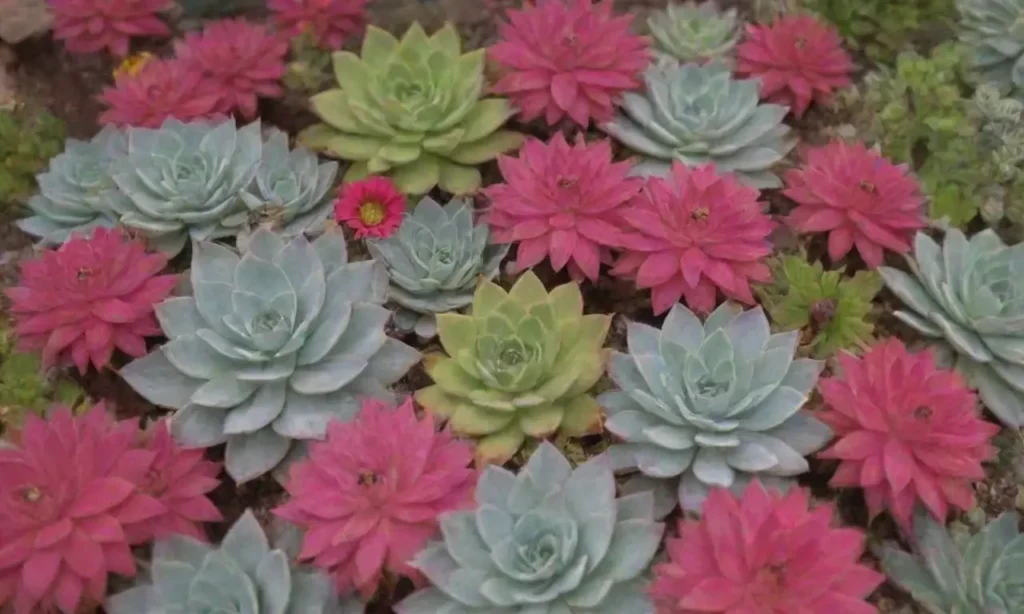
Introduction
In recent years, gardeners have become increasingly aware of the importance of creating environments that not only beautify their spaces but also support local wildlife, particularly pollinators like bees, butterflies, and hummingbirds. Among the myriad of plants available, flowering succulents stand out as excellent additions in any garden. These unique plants offer the dual advantage of requiring less water while providing vibrant, nectar-rich blooms that lure in these essential creatures. Understanding how to effectively utilize succulents in your garden can lead to a more sustainable and vibrant ecosystem.
This article delves into 41 flowering succulents that are not just stunning but also play a crucial role in attracting pollinators. We will explore their characteristics, blooming seasons, and the best practices for incorporating them into your garden design. By the end, you’ll be well-equipped to create a flourishing garden that is as friendly to pollinators as it is aesthetically pleasing.
Understanding the Importance of Pollinators
Pollinators play an essential role in our ecosystems and agricultural production. It is estimated that nearly 75% of flowering plants and about 35% of the world's food crops depend on pollinators for reproduction. This symbiotic relationship between plants and pollinators is particularly relevant in today's world, where habitat loss and environmental pressures threaten the stability of these crucial species. By planting a variety of flowering succulents, gardeners can provide food, habitat, and nesting resources for these useful insects and birds.
Moreover, the incorporation of flowering succulents offers a visually striking way to sustain these populations. Unlike traditional ornamentals, many succulents boast unique structures and colors. This not only elevates the aesthetic value of your garden but can also transform even the smallest of spaces into a sanctuary for pollinators. By opting for succulents, you also minimize water usage, making them incredibly eco-friendly. Choosing the right species will ensure that your garden remains lush and supportive of biodiversity.
Characteristics of Flowering Succulents
When considering flowering succulents, it’s vital to understand their unique characteristics, which separate them from other plant types. Succulents are known for their ability to retain moisture in their leaves or stems, an adaptation that allows them to thrive in arid environments. The thick, fleshy tissue acts as a reservoir, reducing the need for frequent watering. This inherent resilience makes many species of succulents ideal for xeriscaping and low-maintenance gardens.
Flowering succulents produce a range of blooms that come in a variety of colors, shapes, and sizes. This wide diversity means you can find succulents that flower all year round, ensuring your garden remains vibrant and welcoming to pollinators during various seasons. Many flowering succulents produce sweet-smelling flowers rich in nectar, attracting bees, butterflies, and other beneficial insects. The shapes and sizes of the flowers can also cater to different types of pollinators; for instance, tubular flowers tend to attract hummingbirds while broader, flatter blooms cater to bees.
Another essential characteristic is that many flowering succulents are extremely resilient and withstand tough environmental conditions. They often prefer well-drained soils and can thrive in containers or garden beds. This flexibility allows gardeners to plant them in various settings, making them ideal for urban plots, rock gardens, or hanging baskets.
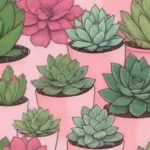 34. Harnessing the Power of Flowering Succulents in Your Decor
34. Harnessing the Power of Flowering Succulents in Your Decor41 Flowering Succulents and Their Benefits
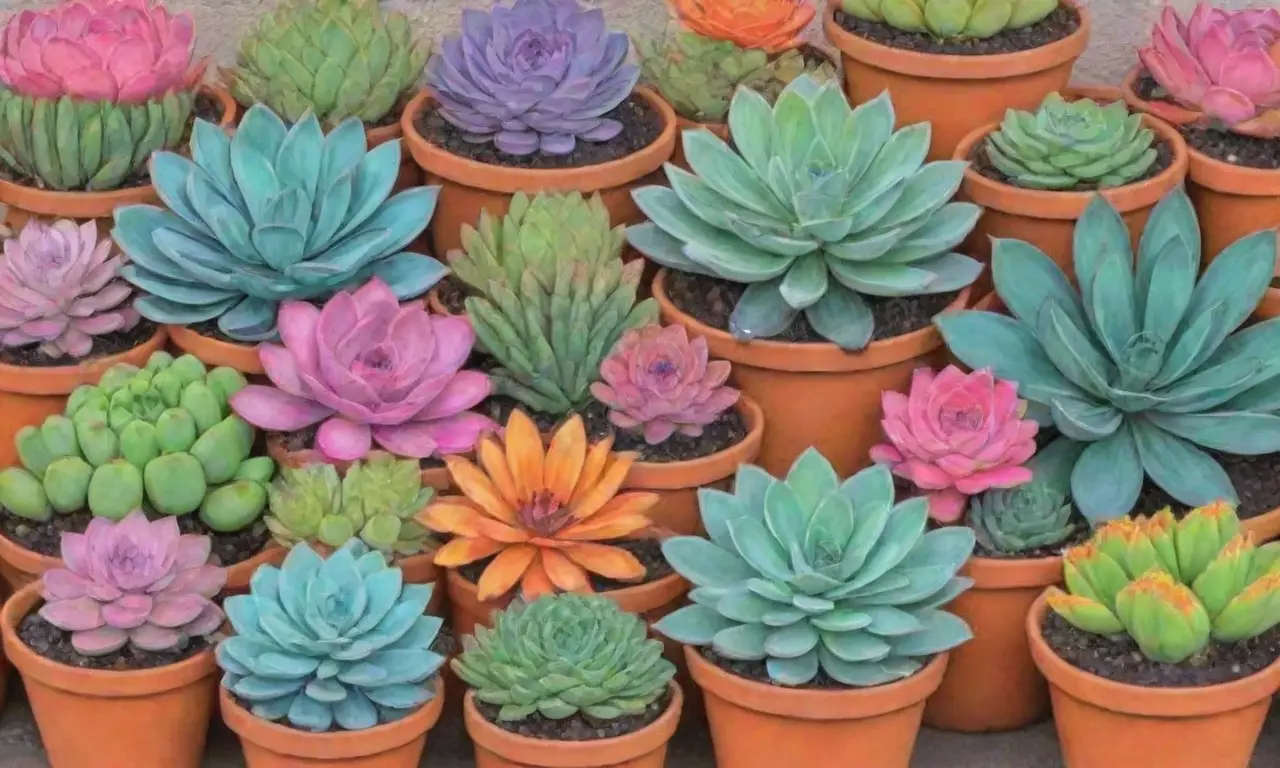
1. Echeveria
Echeveria, known for its rosette growth habit, produces stunning blooms in various colors such as pink, red, and orange. They are especially attractive to bees and butterflies during the summer months.
- Nectar Benefits: Echeverias are known for their abundant nectar, making them a favorite among various pollinators.
- Care Requirements: These succulents prefer bright indirect light and thrive in well-draining soil.
2. Sedum
Sedum species, like Autumn Joy or Stonecrop, are perennial succulents that produce clusters of tiny flowers in late summer and autumn. They provide a late-season food source for bees.
- Nectar Benefits: Pollinators are drawn to the dense clusters that create a landing pad for bees and butterflies.
- Care Requirements: Sedums require minimal care; they are drought-tolerant and can grow in various soil conditions.
3. Agave
Agave succulents, particularly flowering species, can reach impressive heights, with tall flower spikes that emit delightful fragrances attracting hummingbirds.
- Nectar Benefits: Agave flowers are abundant in nectar, making them a go-to plant for hummingbirds.
- Care Requirements: These plants are very drought-resistant but require plenty of sun to thrive.
4. Aloe Vera
Aloe Vera is not just known for its healing properties; its tall flower spikes in winter attract multiple pollinator species.
- Nectar Benefits: Aloe flowers are known for their high nectar content, appealing to bees and birds.
- Care Requirements: They thrive in bright light with some protection from harsh afternoon sun.
5. Kalanchoe
Kalanchoe produces vibrant clusters of tiny flowers in shades of red, orange, and yellow, attracting bees and butterflies during spring and summer.
- Nectar Benefits: Kalanchoe’s brightly colored flowers serve as a beacon for pollinators.
- Care Requirements: These prefer bright light but should be protected from frost.
6. Crassula
Crassula produces delightful flowers in shades of white, pink, and red during late spring to early summer, making them a favorite for bees.
- Nectar Benefits: The clusters of flowers are a significant food source for pollinators.
- Care Requirements: They thrive in well-draining soil and need a good amount of sunlight.
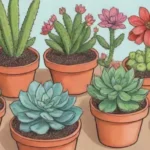 25. Pests and Problems: Caring for Flowering Succulents Properly
25. Pests and Problems: Caring for Flowering Succulents Properly7. Yucca
Identified by its striking stalks of creamy white flowers, the Yucca attracts various pollinators, especially during its bloom season in late spring.
- Nectar Benefits: The height and fragrance of Yucca flowers make them popular among hummingbirds.
- Care Requirements: These are very hardy and require minimal care once established.
8. Mesembryanthemum (Living Stone)
These succulents feature stunning star-shaped flowers that flourish in spring, often forming mats that are inviting to pollinators.
- Nectar Benefits: They have high nectar concentration, making them enticing to bees.
- Care Requirements: They are drought-tolerant and flourish in sunny areas.
9. Haworthia
Haworthia produces tall flower spikes and blooms primarily in the summer. They attract various pollinators with their nectar-rich flowers.
- Nectar Benefits: The intricate flowers provide a feast for bees.
- Care Requirements: These prefer indirect light and require frequent watering, depending on the season.
10. Lithops (Living Stones)
These unique succulents blend into their surroundings, producing flowers that are particularly attractive to pollinators due to their nectar.
- Nectar Benefits: Lithops bloom in the fall, offering vital nutrients to pollinators when few other flowers are available.
- Care Requirements: They thrive in full sunlight and require very little water.
Creating Your Pollinator-Friendly Garden
Designing your garden for sustainability can be an enjoyable and rewarding endeavor. Here are some handy tips to create a thriving ecosystem for pollinators while incorporating flowering succulents.
Planning and Layout
When planning your garden, consider grouping flowering succulents together for a stunning visual impact and a concentrated nectar source for pollinators. Consider the bloom times of the various plants you choose. A garden with successive blooming plants can offer nourishment for pollinators throughout the growing season. Mixing in plants of different heights adds depth and creates diverse habitats.
Choosing the Right Soil
Many succulents thrive in well-draining soil. You can create a desert-themed garden or a rock garden with a mix of gravel, sand, and organic material to support the succulents while making sure they have access to essential nutrients.
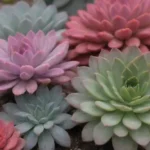 21. The Most Resilient Flowering Succulents for Difficult Climates
21. The Most Resilient Flowering Succulents for Difficult ClimatesWatering Practices
Be sure to set up an efficient watering schedule that matches the needs of your flowering succulents. As they typically require less water, consider installing a drip irrigation system to provide modest, consistent watering.
Providing Shelter
Create habitats by including a range of plants beyond flowering succulents to ensure that pollinators have various nesting options. Including native plants will help maintain local wildlife, while placing stones or small logs throughout the garden can provide shelter for insects.
Conclusion
Incorporating flowering succulents into your garden is more than just an aesthetic choice; it’s a crucial step towards creating a habitat that nurtures local pollinators. The list of 41 flowering succulents presented not only enriches the visual beauty of your space but also contributes to the health and sustainability of the surrounding environment.
By understanding the vital relationship between these vibrant plants and the pollinators they attract, we can make informed decisions that result in a thriving garden. Remember that maintaining an eco-friendly garden requires care and consideration. Selecting the right species, understanding their needs, and ensuring they fit harmoniously into your landscaping will ultimately lead to a more resilient and beautiful space.
As you embark on your gardening journey, take the time to appreciate the ecological benefits of incorporating flowering succulents into your outdoor space. Whether your garden is large or small, each plant you choose can make a world of difference in supporting vital pollinator populations. Embrace this opportunity to contribute positively to your local ecosystem while enjoying stunning blooms and captivating wildlife. Happy gardening!
If you want to read more articles similar to 41. Flowering Succulents that Attract Pollinators to Your Garden, you can visit the Flowering Succulents category.

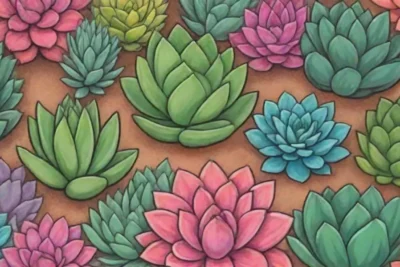
You Must Read